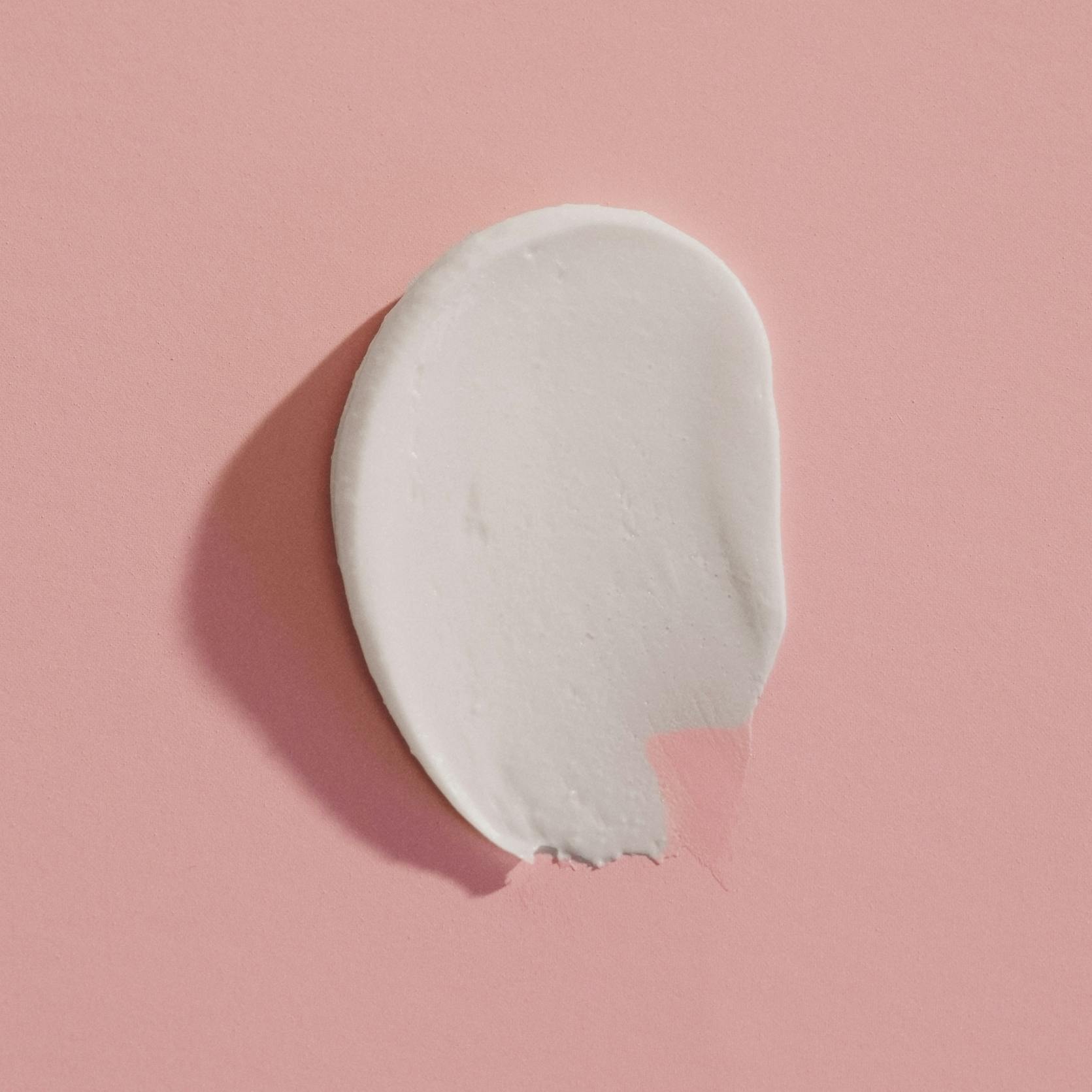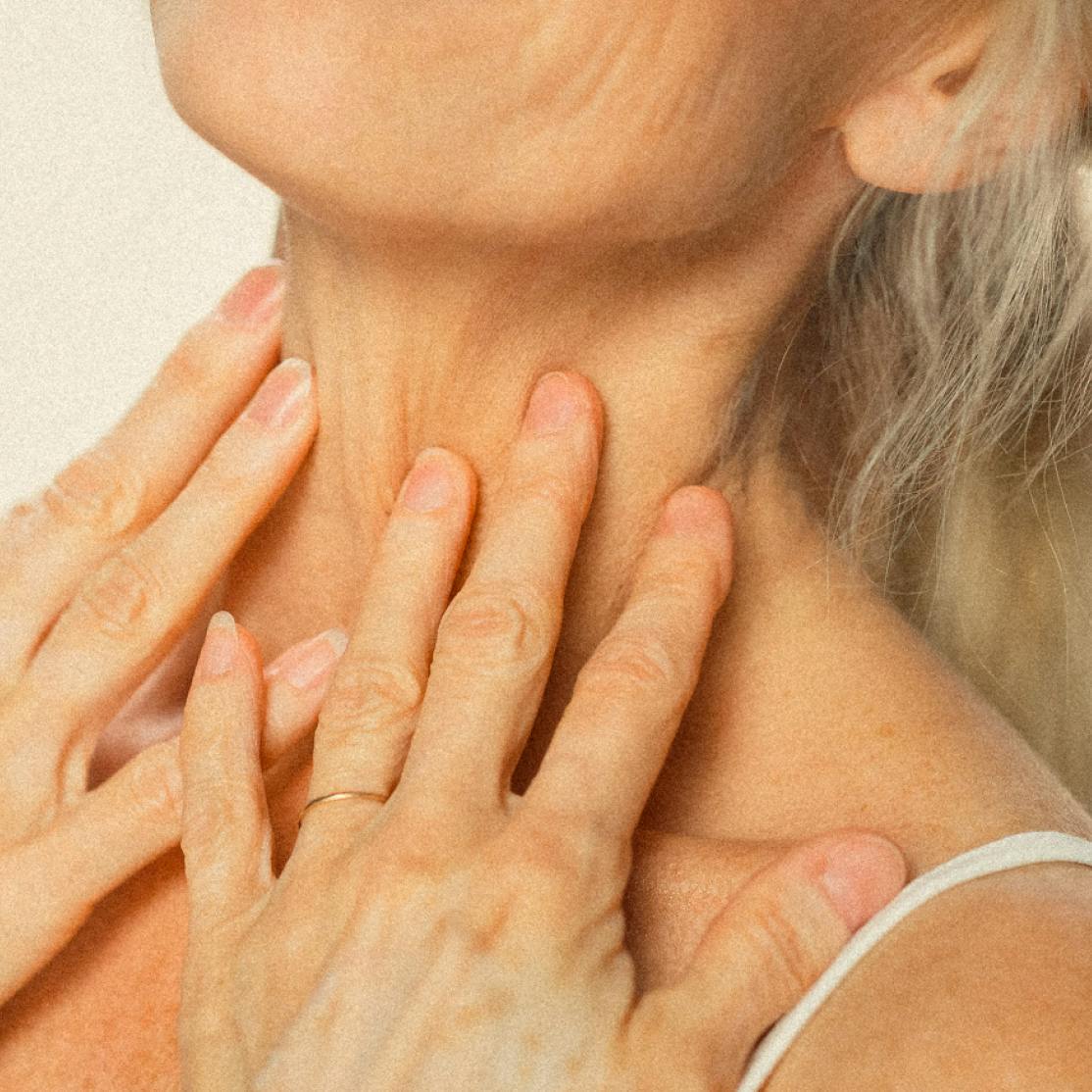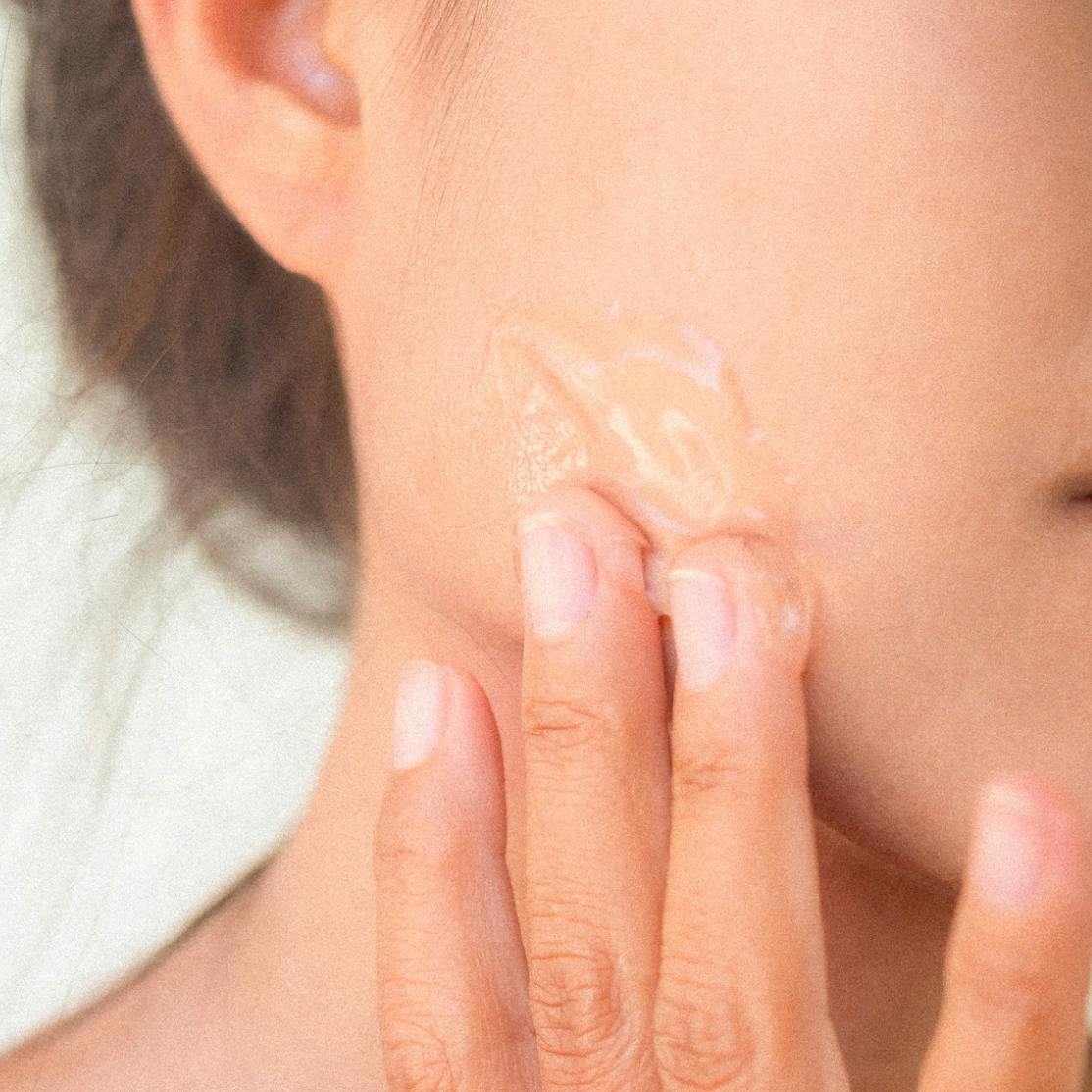Estrogen plays a key role in keeping your skin and vaginal tissues lubricated, thick, and elastic. During menopause, declining estrogen levels can cause dryness and irritation. Prescription creams containing estriol or estradiol can help, with options designed for vaginal tissue or skin concerns on your face and body. Consult your Midi clinician to find the right solution for your needs.
A fact every woman should know: Estrogen is a hormone that affects much more than your reproductive system. You have estrogen receptors all over your body—including in the skin on your face as well as the tissues of your vagina and vulva.
During the menopausal transition estrogen gradually declines, and with that, you may feel drier and more delicate skin on your face—and down below. Estrogen creams are designed to relieve that by restoring moisture and thickness. Less dryness means facial skin looks plumper and less lined, and the skin of your vagina and vulva feels more comfortable, especially during sex.
The first question most of us ask about estriol: What exactly is it? Estriol is one of three types of estrogen:
- Estrone (E1)
- Estradiol (E2)
- Estriol (E3)
Estriol is the weakest form of estrogen.The body makes estriol during pregnancy (to help the uterus grow and stay healthy), but it’s undetectable most other times. And while no one is suggesting that you trick your body into thinking there’s a baby on board, estriol can be used during the years leading up to and following menopause in a topical cream. Different versions of topical estrogen cream can be applied vaginally or onto your facial skin. The result? Skin that’s healthier and better lubricated, wherever you use it.
If you’re thinking that estrogen cream might be something you need for your menopausal symptoms, keep reading to learn more about the types of estrogen cream, how they’re used, possible benefits, plus precautions and potential side effects.
Types of Estrogen Creams
One of estrogen’s many roles in the body is keeping your skin and vaginal tissues lubricated, thick, and elastic. So when estrogen levels in your body decline during menopause, you lose the protective power of this hormone. The shift can leave you with a host of uncomfortable symptoms, including sometimes Sahara-level dryness on your face and inside and around your vagina. Fortunately, there are ways to restore this estrogen on a local level through topical estrogen creams. You’ll find estradiol available in vaginal cream and estriol in facial cream.
Estriol Cream Versus Other Estrogen Therapies
Who knew there were so many different words for estrogen? Estriol, estradiol, and conjugated estrogens are all used as part of HRT and are available in many forms like creams, tablets, capsules, rings, and patches:
- Estriol: The weakest form of estrogen, it’s less likely to cause side effects. When applied topically, it does not have systemic effects.
- Estradiol: Estradiol is the strongest type of estrogen. When used in local preparations, it also does not have systemic effects.
- Conjugated estrogens: This describes a mixture of estrogens. It can be found in HRT in preparations like oral tablets or vaginal cream, and this medication has systemic effects.
When it comes to safety, have a discussion with your clinician about if estrogen therapies are recommended for you based on your symptoms, health background, and goals of treatment. That will also inform the type of estrogen therapy recommended for you, whether that’s a topical cream, vaginal insert, or systemic HRT such as a pill, patch, or ring.
Each comes with a risk of side effects as well as potential drug interactions, so it’s important to speak with a healthcare professional, like a Midi clinician, to get clear on the best option for you.
Vaginal Estradiol Cream
As estrogen begins its decline and you march through the years of perimenopause and postmenopause, research shows that the odds of experiencing vaginal dryness go up. In fact, about half of sexually active postmenopausal women report vaginal dryness, and more than half of postmenopausal women regardless of sexual activity report vaginal itching and irritation. Lack of lubrication, plus the thinning of vaginal tissues, makes the vaginal walls way more prone to irritation. Clinically, this is called atrophic vaginitis, or vaginal atrophy.
With that often comes discomfort and pain during intercourse. And guess what: If sex doesn’t feel good, you may be reluctant to have it in the first place, which can contribute to intimacy issues with your partner. Thanks to these hormonal changes, you may also experience urinary symptoms like urgency and frequency and an increase in UTIs.
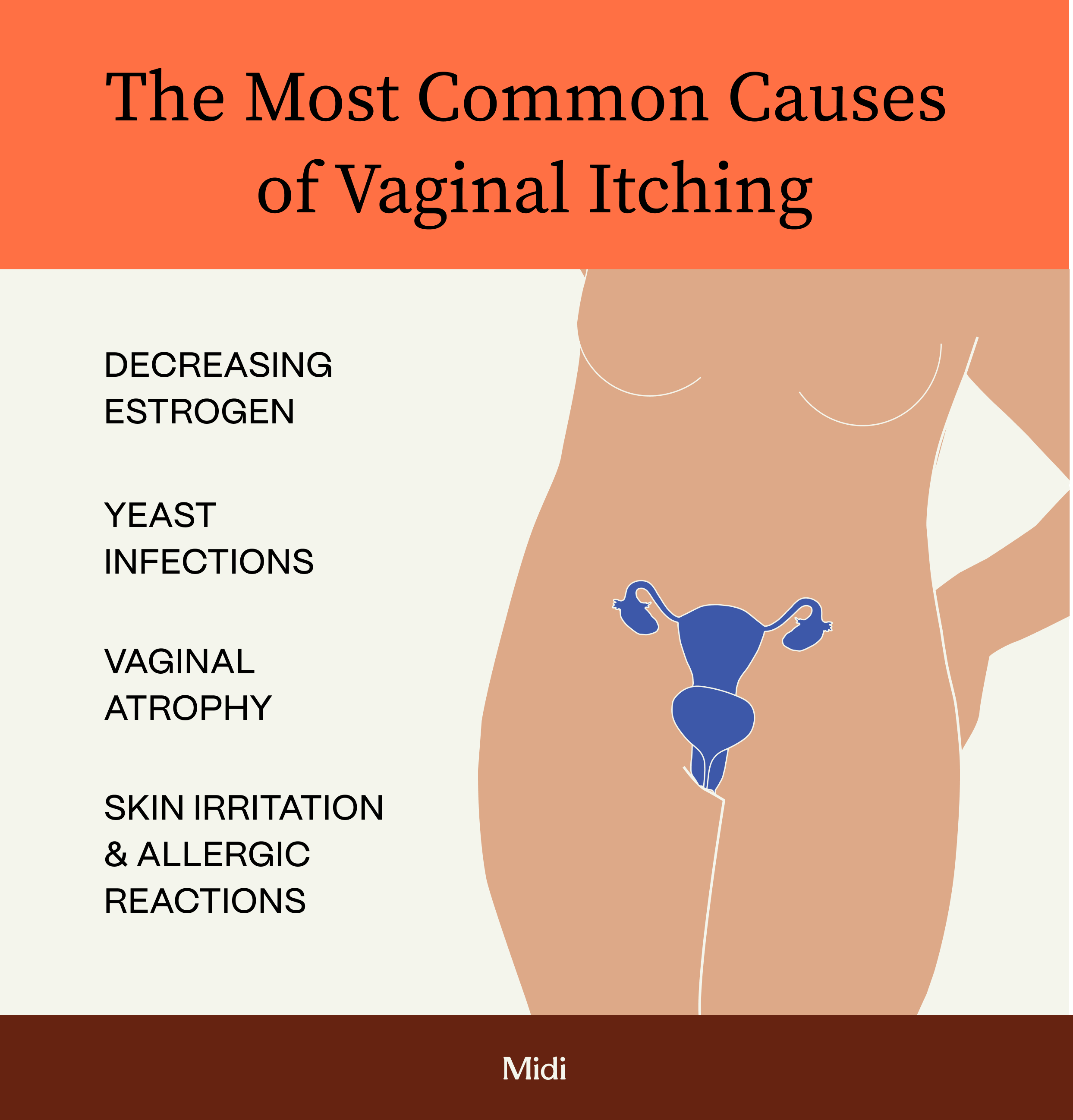
Topical vaginal estradiol cream is a form of local, low-dose HRT. This type of HRT uses a smaller amount of estrogen compared to systemic HRT, which you might take as a pill or patch) where the hormone gets into your bloodstream to treat multiple symptoms of menopause. Local, low-dose HRT treats a specific area only (in this case, the vaginal tissues), decreasing the likelihood of internal effects. Of course, there are other treatments to consider for vaginal symptoms, OTC vaginal lubricants, couples counseling, and healthy lifestyle habits.
Vaginal estrogen cream is used to restore dry, thinning vulvar tissues, almost magically bringing them back in time to when they were more naturally lubricated, thick, and elastic. You may have heard it called “skincare for down there” (!). And that’s totally true–vaginal estrogen can bring relief from symptoms including:
- Dryness
- Itching
- Discomfort
- Painful sex
- Frequent UTIs
At Midi, you’ll find this available as a DHEA/estradiol cream, which is a once-a-day topical moisturizer that you apply externally. (DHEA is a hormone that your body can use and convert into other sex hormones like testosterone and estrogen.) You can also use this in tandem with or in place of vaginal estrogen that’s inserted into the vagina. Topical vaginal estradiol cream can also be used alongside systemic hormone replacement therapy, which is HRT that circulates throughout the body and comes in the form of patches, pills, gels, and more.
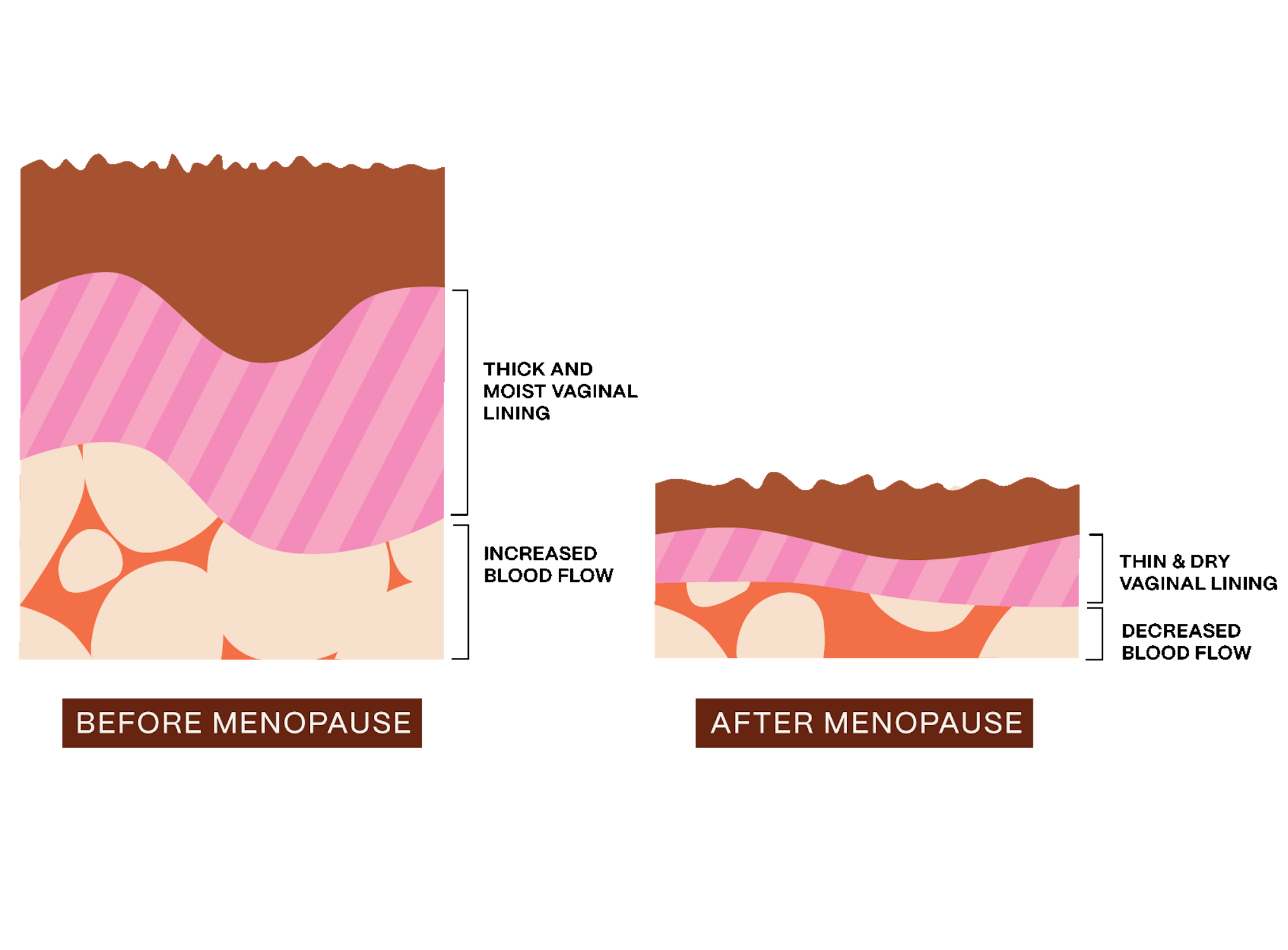
Vaginal estradiol tablets or rings are considered first-line treatment recommendations for survivors of breast or gynecological cancers. However, a topical vaginal estrogen cream can also safely be used by this group of women and may be recommended in certain circumstances. An external cream provides local estrogen to tissues and increases blood flow, and it works by reducing vaginal pH and working directly on the vaginal lining to bring back moisture and thickness.

If you’re using a topical vaginal estrogen cream, be sure to talk to your clinician about exactly how to use it, and how often. The amount you use should be customized based on personal recommendations. Vaginal estrogen cream may be used internally or externally, but the amount you use, how it is applied, and how often to apply it will differ depending on clinician advice.
Typically, you’ll continue to use vaginal estrogen cream. Otherwise, stopping will cause vaginal symptoms to come back. Keep in mind that this medication is not a systemic treatment, so it’s usually a safe option for most patients. That said, it’s important to talk to your clinician about any uncomfortable reactions you’re experiencing. Although this cream treats itching, it can also cause itching and discharge, which are its two most common side effects.
Facial Estriol Cream
Now, let’s tackle the issues of the skin on your face. If you’ve noticed that your skin isn’t looking as springy and soft as it once did, and your tried-and-true moisturizer is definitely no longer a cure-all, welcome to the menopausal club. As women enter the menopause transition, the first skin-related effect is dryness, then a loss of firmness and elasticity. Why? Due to a decline in estrogen, the skin is making less oil, and collagen and elastin production—two important structural components of skin—starts to sputter, so skin becomes thinner.
You may also notice that your once-calm complexion may be flakey, red and angry. So, what can you do to bring back that suppleness and overall health?
Many women find that facial estrogen cream makes a difference in their skin. Hormone creams were incredibly popular–even 100 years ago–as a way to improve the appearance of aging. However, these topicals became controversial after exaggerated concerns linked hormone therapy to an increased risk of breast cancer and heart disease in a study published 20 years ago. A large body of more recent research has shown that hormone treatments are safe, even though they may not be the best choice for everyone. And with that, topical facial estrogen creams are getting another look as a legitimate treatment to reduce the signs of aging at home.
As we covered earlier, a facial cream differs in formulation from a vaginal cream. (A vaginal estrogen cream should not be used on facial skin.) Midi’s Estriol+ Facial Cream taps estriol—that weakest of the three estrogen hormones—along with DMAE (a skin-firming and brightening ingredient) and hyaluronic acid, which attracts water to plump up skin. This combination boosts skin moisture and elasticity and promotes collagen synthesis. The potential result is a smoother texture, tighter skin, and a more even skin tone.
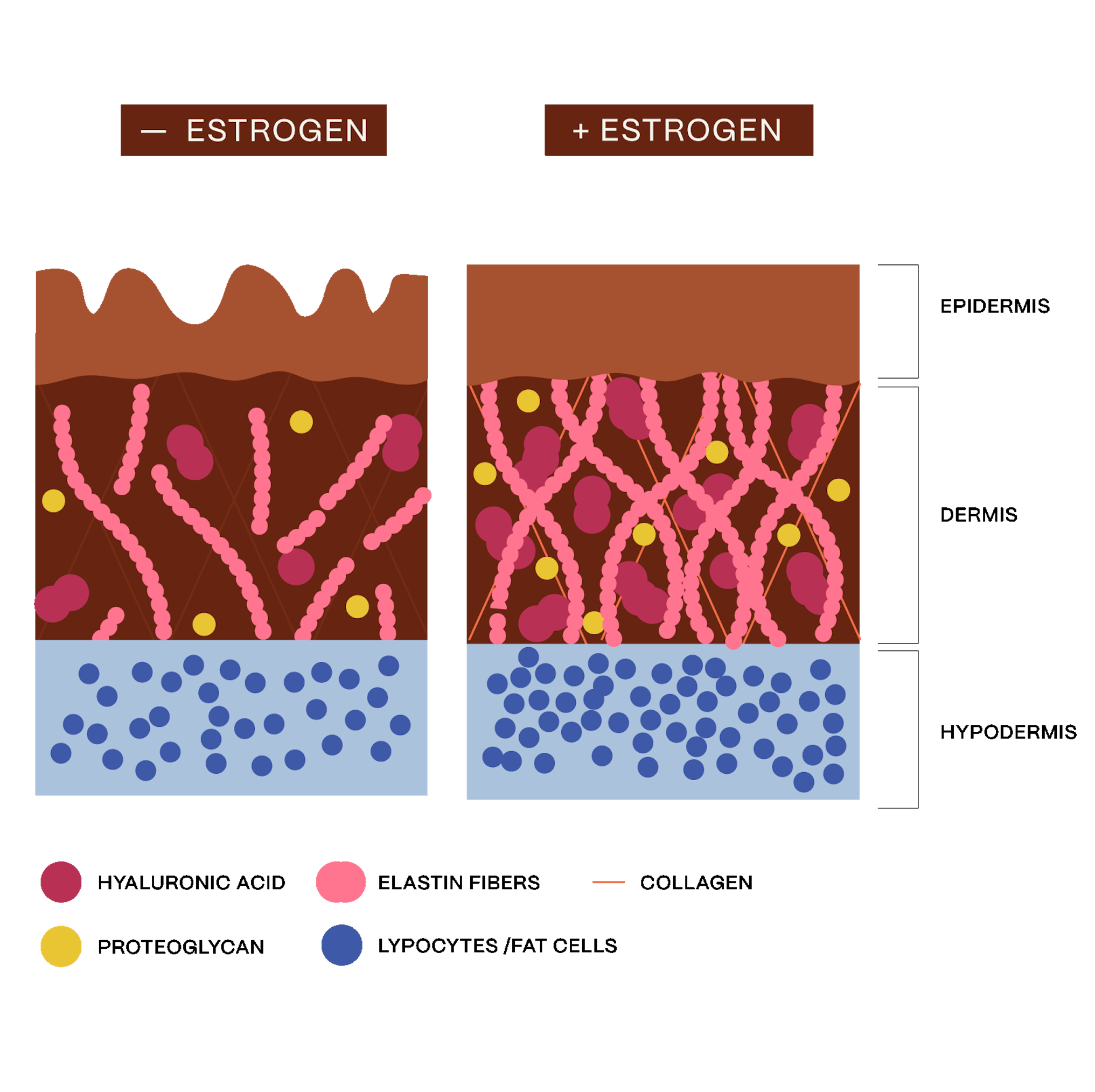
One small study that looked at topical estriol cream found that applying 1 gram of the cream daily for six months improved measures of skin elasticity and firmness, wrinkles, moisturization, pore size, and the appearance of blood vessels. Some of these benefits were seen in just seven weeks.
In another small study on 30 women who were 45 to 55 years old, those who were treated with topical estrogen for 24 weeks benefitted from an increase in type I and III collagen in facial skin, published in the journal Gynecological Endocrinology.
To use it, you’ll apply the cream topically to your face and neck. You can use an estriol cream alongside other skincare products, including other ingredients that treat the signs of aging like retinol, or apply before makeup.
Like any product you’re applying to your skin, you can experience side effects. One of the most common issues is pigmentation problems, including melasma. Make sure you’re using (and reapplying) sunscreen daily when using an estriol skin cream. The approach to treating menopausal symptoms will differ for every woman, so talk to your clinician about if an estriol face cream will fit into your treatment plan.
Cost Considerations and Insurance Coverage
How much does estriol cream cost? What about the cost of estradiol cream? The cost for these products varies. At Midi, we offer both compounded and commercial-made treatments resulting in varied pricing. Our compounded topical options include:
- For vaginal health, DHEA/Estradiol Cream: $90 for a 30-day supply
- For skin health, Estriol+ Face Cream: $149 for a 90-day supply
Paying for menopausal care does not have to be a financial stressor. In fact, virtual visits and prescriptions recommended for you may be covered through insurance when you access care from a virtual clinic for women’s midlife health like Midi. Talk to your insurance provider to see what options and coverage are available to you, as well as details on copays and coinsurance. To pay for services and prescriptions, you may also opt to use HSA and FSA funds. Understanding your coverage and benefits available to you will help you guard against surprise costs and choose menopause therapies that are both effective and affordable.
Future Research and Developments in Estriol Cream
When it comes to skin, it’s all about aging in a way that makes you feel great about where you are. That can mean accepting a few wrinkles (you earned those smile lines in the best possible way) without settling for skin that’s dry, flakey, and way less healthy. Numerous solutions harness the potential of topical forms of estrogen and other compounds that help replace estrogen in skin, and increasing evidence backs them up.
Most notably, researchers have long been looking at and developing compounds known as SERMs. This stands for selective estrogen receptor modulator, but these are more easily thought of as compounds that have estrogenic effects. That can include topicals that contain:
- Genistein, an isoflavone found in soy and other legumes. (Isoflavones are a plant estrogen.)
- Equol, an isoflavone derived from soy
- 4AR, a form of resveratrol
Right now, as new ingredients are developed, we know that we have a lot of options that address the signs of aging on our appearance, including estriol creams, retinoids, growth factors, peptides, and more.
Safety and Precautions
The good news about estriol cream: It uses the weakest of the various forms of estrogen. That doesn’t mean that it’s less effective, just that it’s designed for facial skin to work locally, plumping up tissues and restoring elasticity. It will not increase the level of hormones in your bloodstream, so there is a lower risk of side effects compared to systemic forms of hormone therapy.
Although it’s smart to work with a trained clinician to decide if topical estriol cream is a good choice for you, this is a safe option for the vast majority of women. That said, avoid estriol cream if you are pregnant or receiving radiation therapy on that area of skin, and do not apply to open skin or on top of skin diseases.
Getting evaluated by a knowledgeable healthcare company like Midi will provide the appropriate guidance as to how to use an estriol cream and the right dose and timing based on your menopause symptoms, health history, and quality of life.
The Takeaway
- Estrogen creams are often recommended to address menopause symptoms.
- The weakest form of estrogen, estriol, can be found in topical face creams, which can help promote collagen production and add moisture to reduce the signs of aging, such as lines and wrinkles.
- Vaginal estrogen cream contains a stronger type of estrogen called estradiol, and this medication treats symptoms of vaginal atrophy like thinning and dryness by making the vaginal tissues thicker and more elastic and hydrated.
- Although estrogen creams are not right for every woman, they are generally safe for most to use long-term and typically cause very few side effects. Talk to a knowledgeable clinician in menopause for recommendations that are customized for you.
Frequently Asked Questions
What is estriol cream used for?
Estriol cream is a topical cream that is used to replenish estrogen in tissues. Estriol can be formulated into a facial cream to improve skin firmness, elasticity, and hydration.
What is the difference between estriol and estradiol cream?
These are both different types of estrogen. Estriol is considered the weakest form of estrogen, while estradiol is the strongest.
Does estriol have side effects?
Estriol face cream side effects are typically mild. The topical medication can worsen hyperpigmentation problems and exacerbate melasma.
Is it safe to use estriol cream long term?
Some women will be advised to use estriol cream long-term. Remember, it does not cause a rise in hormone levels in your blood, so there aren’t body-wide effects of estriol cream. However, the recommended duration of treatment should be catered to your menopause symptoms, additional health concerns, and preferences when deciding if it’s a safe long-term option for you.
Can I apply estriol cream with my finger?
Yes! If you’re using a topical facial estriol cream, go ahead and apply a small amount to your face and neck with your fingertips. If you are using a vaginal estradiol cream, you can also apply it with your hands. After you’ve applied the cream, wash your hands.
Can I use estriol every night?
Many people use estriol daily. Make sure that you’re following the instructions of your clinician as it relates to your care plan, as the advice for you may be different.
If you’re in perimenopause or menopause and want guidance from clinicians who specialize in women’s midlife health, book a virtual visit with Midi today.
Hormonal change is at the root of dozens of symptoms women experience in the years before and after their period stops.
Our trained menopause specialists can help you connect the dots to guide you towards safe, effective solutions.
Whether you need personalized guidance or a prescription routine to tackle symptoms—including vaginal dryness and irritation, brain fog, hot flashes, sleep trouble, mood swings, and weight gain—we’ve got you covered.
Midi’s mission is to revolutionize healthcare for women at midlife, wherever they live and whatever their health story. We believe that starts with education, to help all of us understand our always-changing bodies and health needs. Our core values guide everything we do, including standards that ensure the quality and trustworthiness of our content and editorial processes. We’re committed to providing information that is up-to-date, accurate, and relies on evidence-based research and peer-reviewed journals. For more details on our editorial process, see here.



